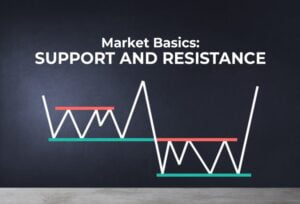In the dynamically evolving realm of financial trading, the phrase “Types of Synthetic Indices” has emerged as a pivotal innovation, revolutionizing the landscape with a fusion of cutting-edge technology and unprecedented accessibility. These indices are optimally crafted through sophisticated algorithms coupled with stochastic random number generation processes, which distinguishes them from the conventional financial market constructs. This avant-garde approach engenders a trading milieu that is both unique and multifaceted.
In this guide, we will learn about synthetic indices, their main features, and the advantages and challenges they bring.
Table of Contents
ToggleWhat are synthetic indices?
Synthetic indices are essentially artificial financial instruments, akin to a meticulously concocted blend rather than a direct representation of any specific set of assets or stocks.
Their main purpose is to mimic the behavior and features of real market indices like the S&P 500 or Dow Jones. Nevertheless, they are not related to any tangible real-world underlying asset; instead, they are synthetically designed to mirror the actual dynamics of the market, including price changes and associated liquidity risks.
One defining characteristic of synthetic indices is that they are insulated from real-world events and news. It means they are not influenced by external factors that generally affect markets. They offer continuous trading opportunities that are available 24/7 throughout the year, alongside consistent volatility and predetermined fluctuation intervals.
Hallmarks of Synthetic Indices
Here are some key attributes that establish synthetic indices as a compelling choice for traders.
Complex Algorithmic Price Dynamics: At the heart of synthetic indices resides an elaborate and intricate amalgamation of advanced algorithms and stochastic processes. This deliberate synthesis is adeptly configured to emulate the volatility and price oscillations characteristic of traditional financial markets. This innovative structure ensures that traders are immersed in a market dynamic that mirrors the practical and tangible trading scenarios.
Unceasing Trading Hours: A paramount benefit of synthetic indices is their continuous operational paradigm, transcending the conventional constraints of time and geography. These markets are open 24/7, allowing people to trade globally without any time or location restrictions. People from anywhere can trade at any time of the day or night.
The eradication of limitations ensures that trading opportunities are not forfeited because of the cessation of market activities, a typical impediment in traditional trading contexts.
Plurality and Customization: Synthetic indices are not restricted by the usual limitations of real-world financial assets.
This liberty affords traders an extensive spectrum of underlying components to choose from, encompassing everything from major commodities to various currency pairs. This variety guarantees that there is a synthetic index that matches the interests and knowledge of every trader.
Furthermore, numerous platforms proffer customization features for these indices, enabling traders to adjust volatility thresholds and other critical parameters. This flexibility permits the creation of a trading ecosystem that is meticulously aligned with individual preferences, risk appetites, and strategic objectives.
Core benefits of synthetic indices
Synthetic indices extend a suite of distinctive advantages over their conventional market counterparts. Such as:
· These indices are characterized by comparatively lower initial capital requirements, thereby democratizing access to the trading domain for individuals with limited financial resources. This attribute makes it feasible for a more extensive spectrum of traders to engage in market activities.
· By integrating a myriad of assets, synthetic indices facilitate a more streamlined and efficient approach to investment diversification. This mixture of diverse assets is instrumental in diffusing risks and potentially amplifying the likelihood of achieving favorable returns.
· Contrasting sharply with the conventional financial markets, synthetic indices boast a continuous, 24/7 trading window. This perpetual availability is particularly advantageous for traders who must balance trading with other professional or personal commitments or those residing in varying time zones, offering them an unparalleled degree of flexibility.
· A salient and unique benefit of synthetic indices is their relative resistance to economic events and news. This separation from global economic and geopolitical changes creates a more predictable and controlled trading system.
The challenges of trading synthetic indices
While synthetic indices proffer multiple opportunities, they also pose a spectrum of challenges that necessitate intelligent navigation by traders. Some of them are:
· A salient hurdle in the domain of synthetic indices trading is the dependence on algorithms for ascertaining price. These sophisticated computational models are designed to emulate the sophistication evident in real markets via advanced mathematical constructs. Nonetheless, their efficacy is circumscribed by their simulation-based essence. Exclusive reliance on these algorithmic mechanisms, bereft of a holistic comprehension of their internal mechanics and extrinsic variables, can precipitate strategic miscalculations.
· The architecture of each synthetic index is an amalgam of diverse components, each playing a pivotal role in dictating the index’s behavioral pattern. Understanding the nuances of these indices – encompassing their formulation, as well as the range of elements influencing their trajectories – empowers traders to handle price oscillations more accurately and customize their strategies to be congruent with market flow.
· The intrinsic nature of synthetic indices frequently culminates in pronounced volatility. This phenomenon can lead to swift price alterations, offering both lucrative prospects and substantial risk for monetary loss. Traders must exhibit proficiency in managing this volatility, striking an equilibrium between the allure of quick gains and the peril of abrupt market downturns.
· The ceaseless operation of synthetic indices markets can ensnare traders into overtrading. People who try to take advantage of the market can become overly involved. This can lead to exhaustion and negatively impact their decision-making abilities. Upholding trading discipline and adopting a measured approach are crucial in sidestepping the adverse ramifications of overtrading.
Bottom line
Ultimately, synthetic indices epitomize the spirit of innovation in the realm of financial trading and represent a new and possibly rewarding chance for traders worldwide. Nevertheless, the road to successful trading in these markets is filled with caution and preparation. Traders must first spend some time getting to know the subtleties of these indices and get used to their inherent volatility. This careful approach allows for a smart and calculated entry into real-world trading while keeping risks at a minimum.
Read more:













